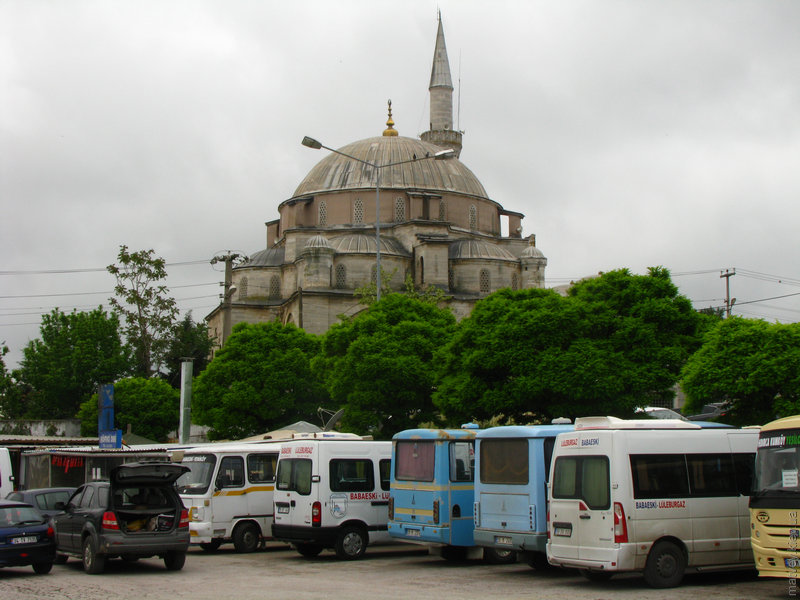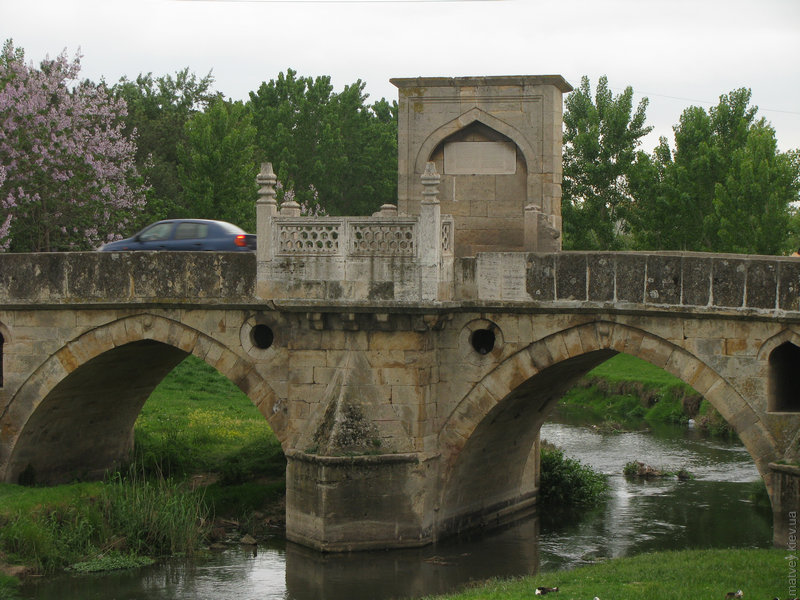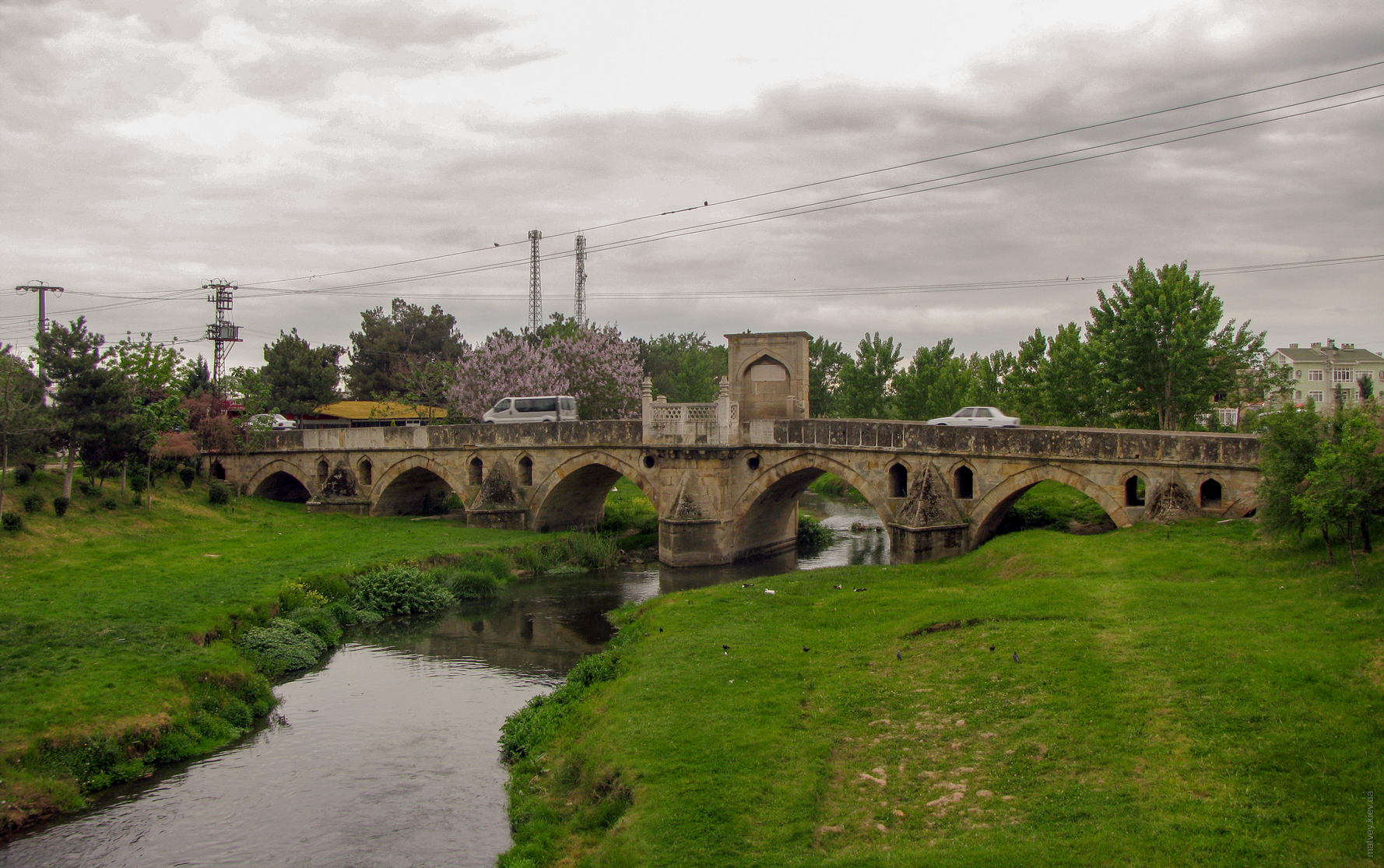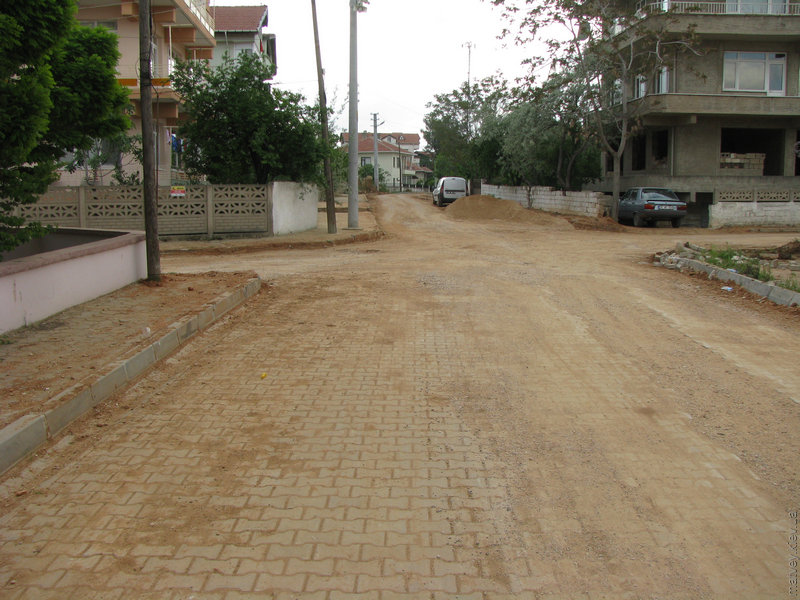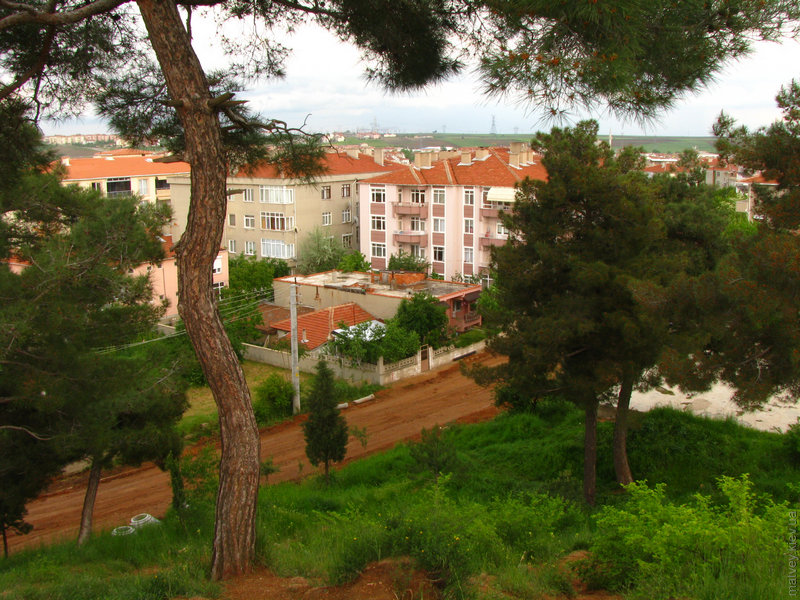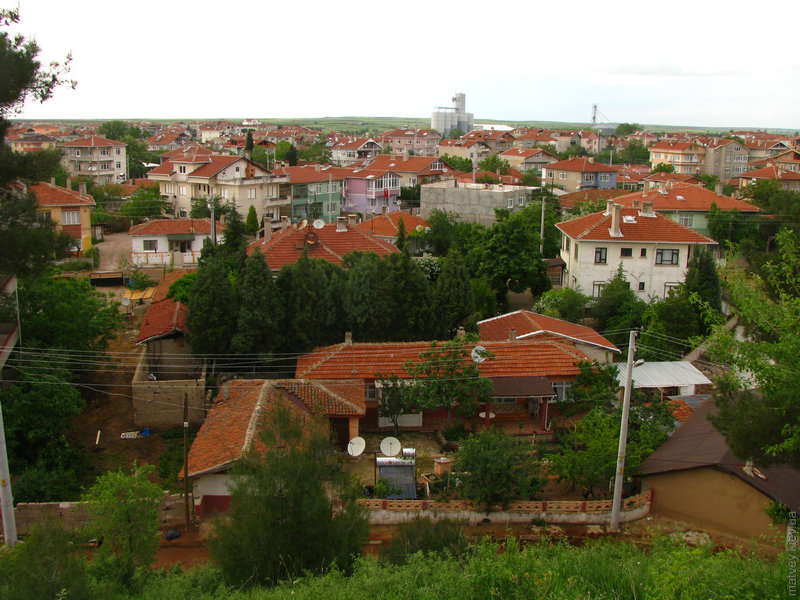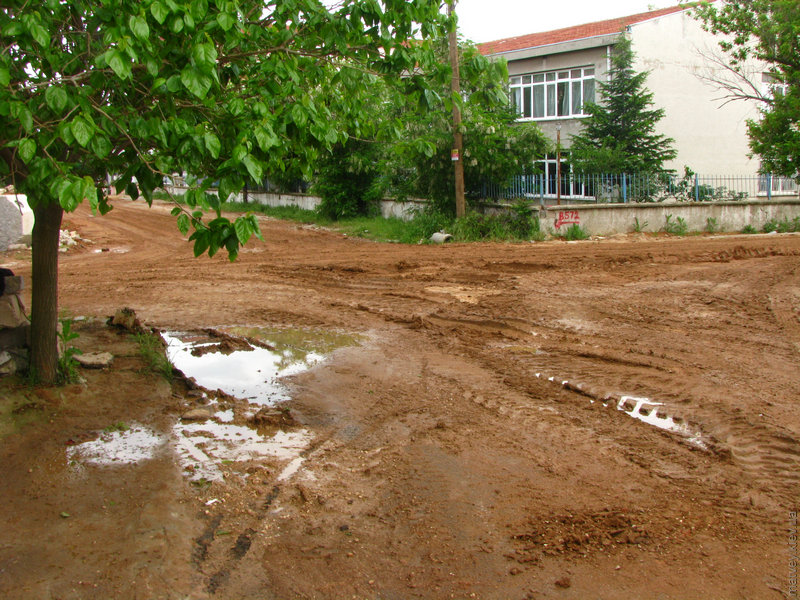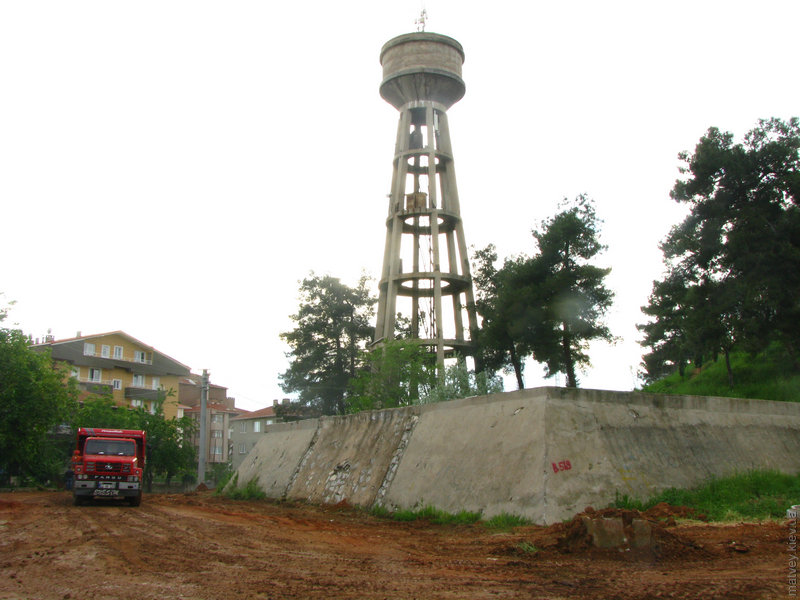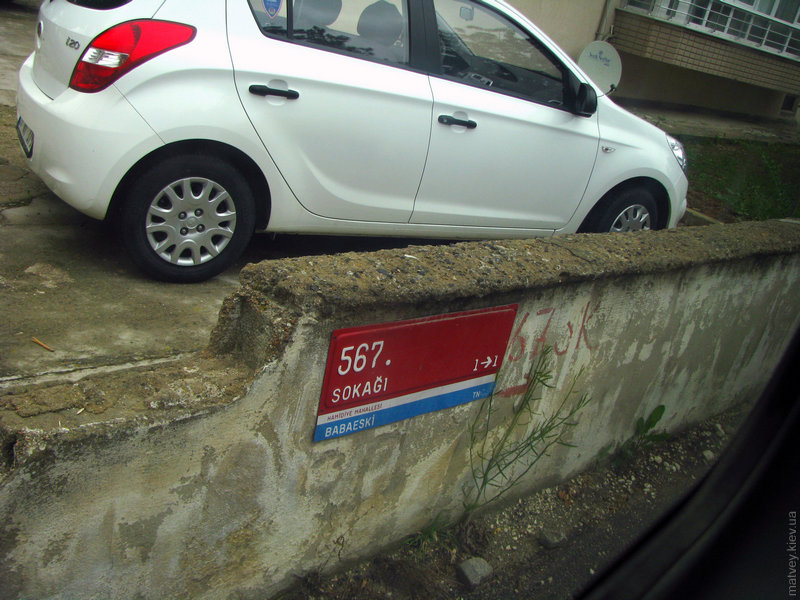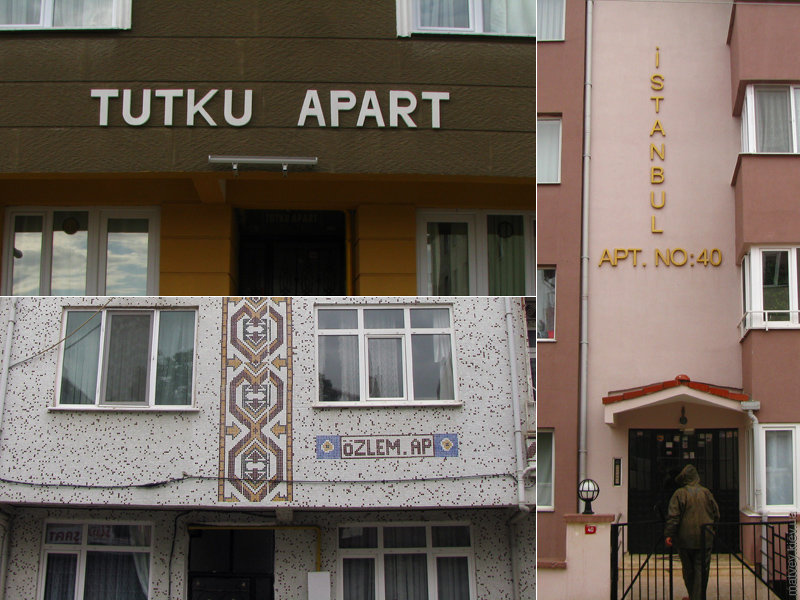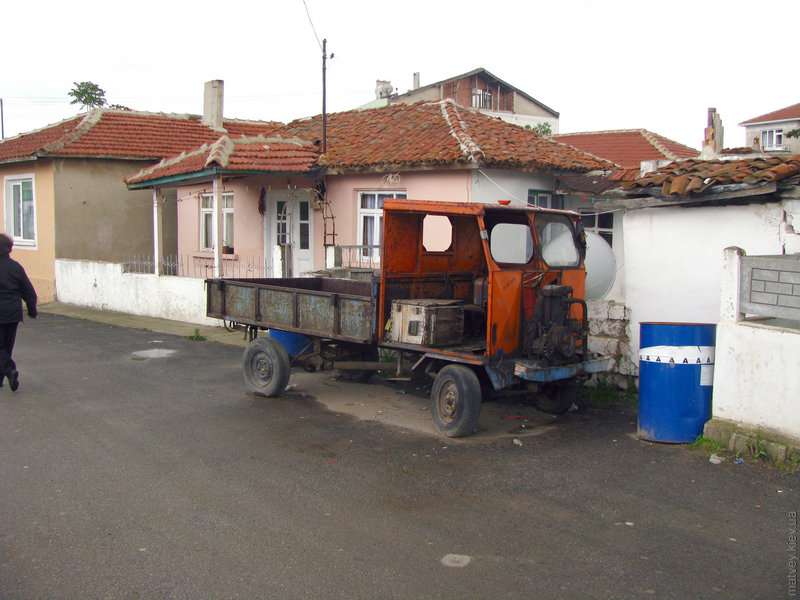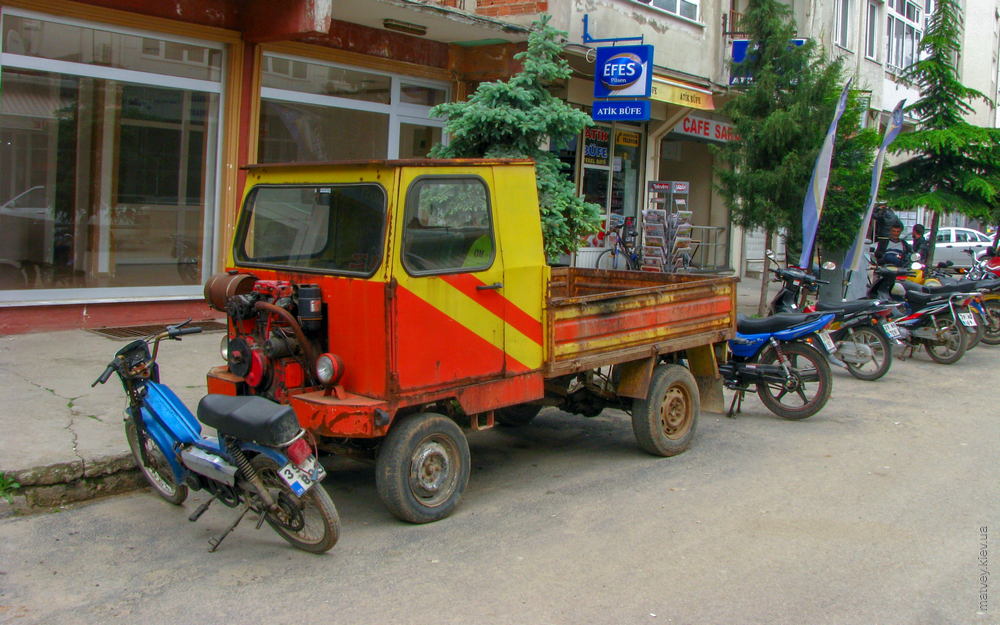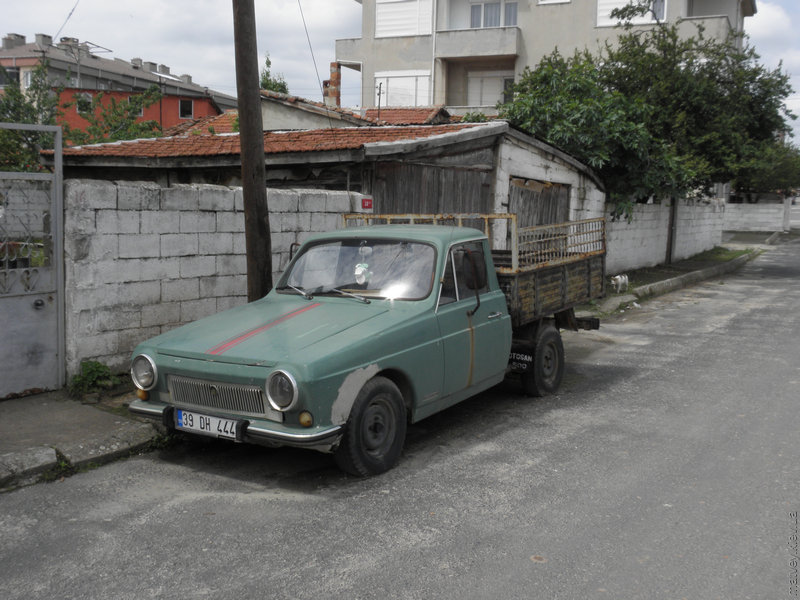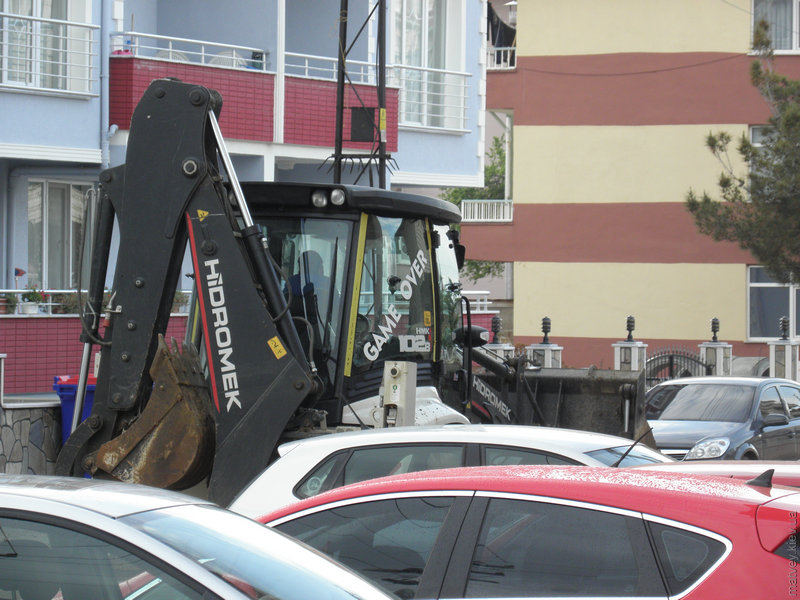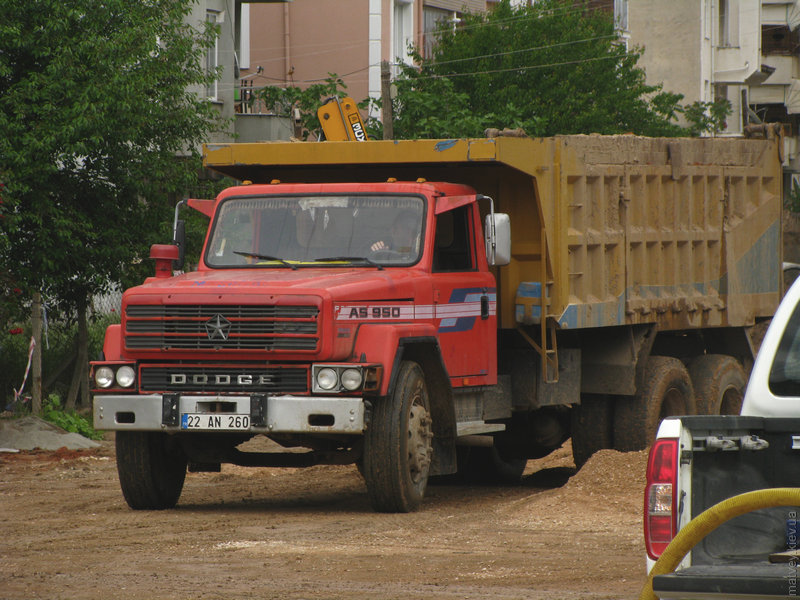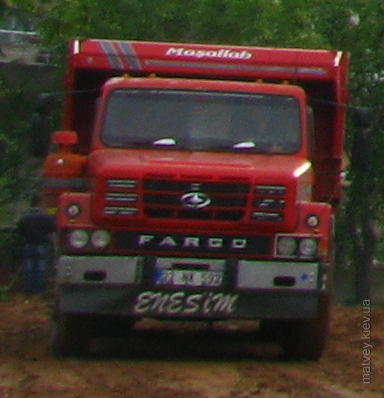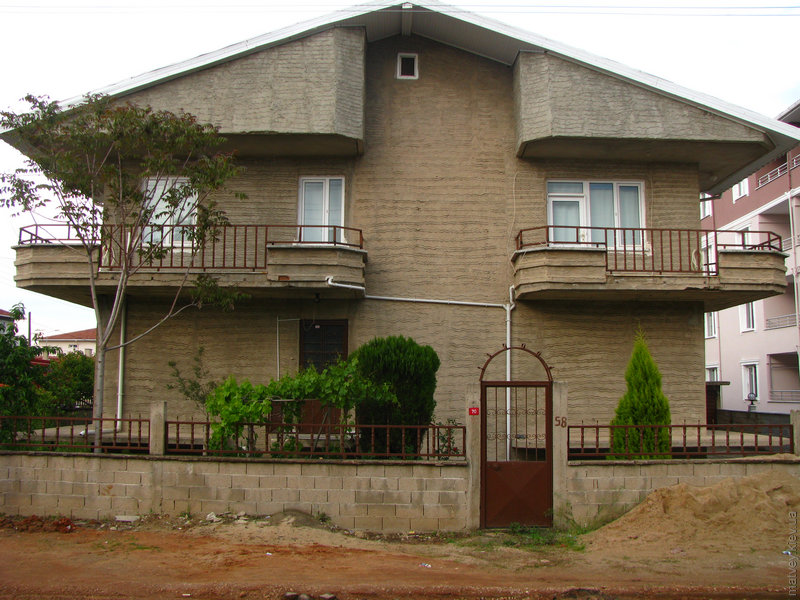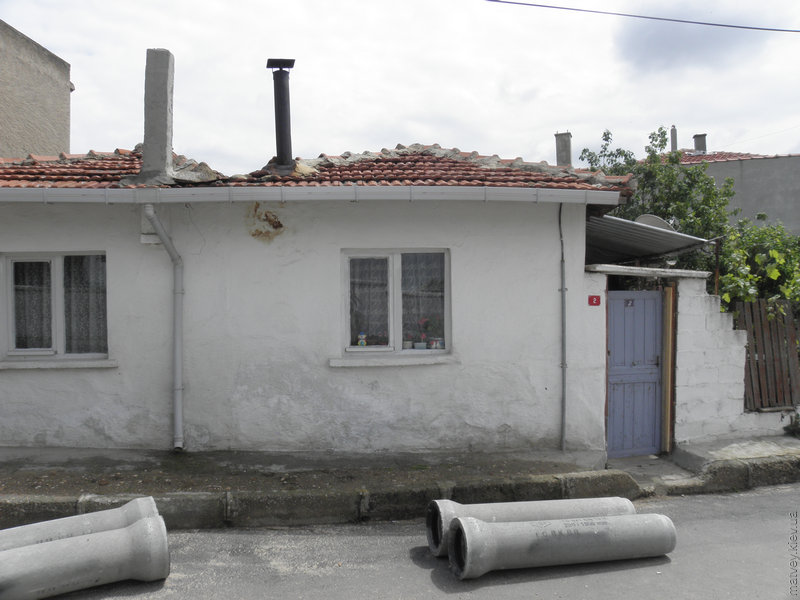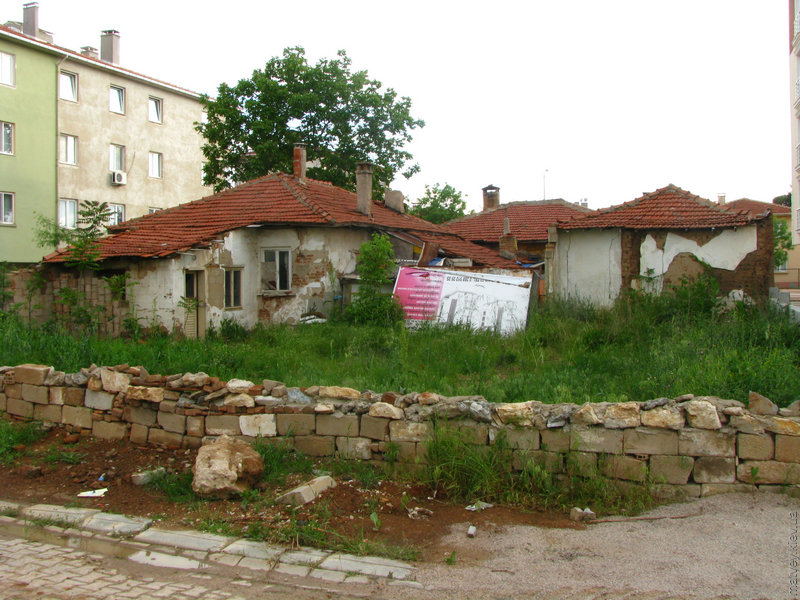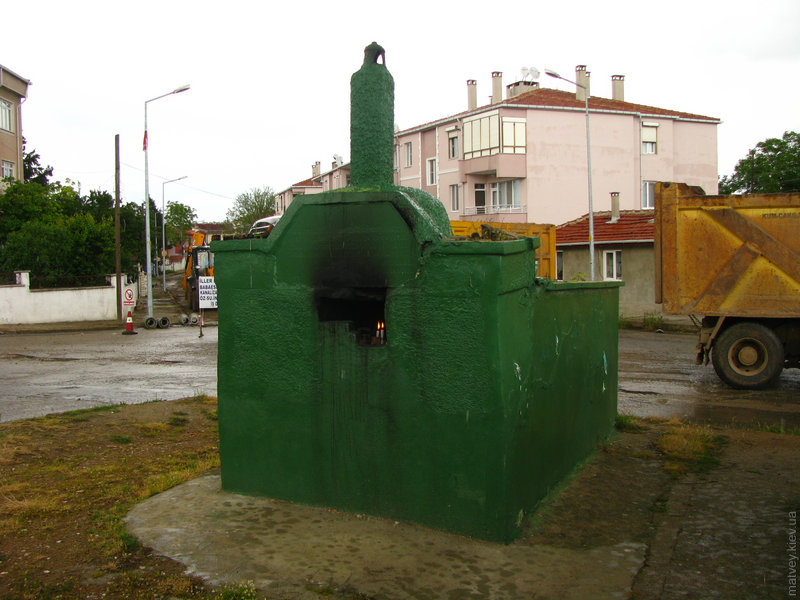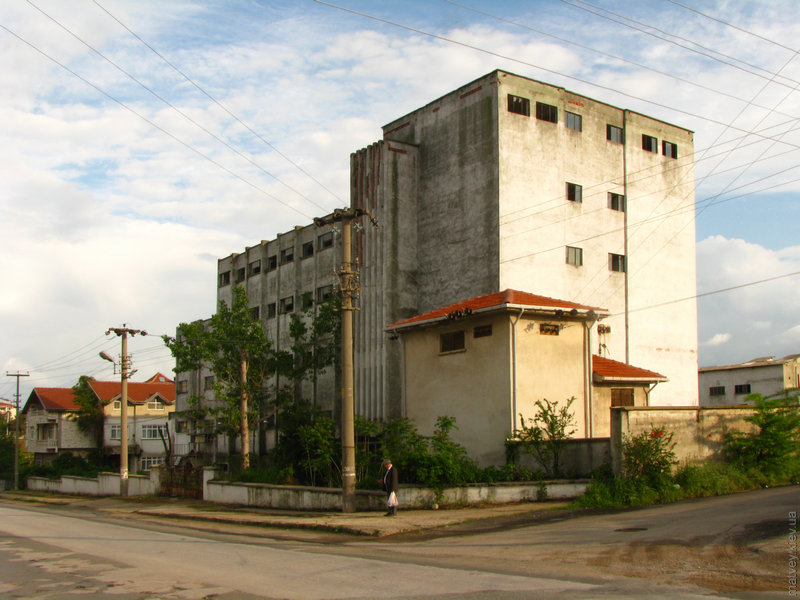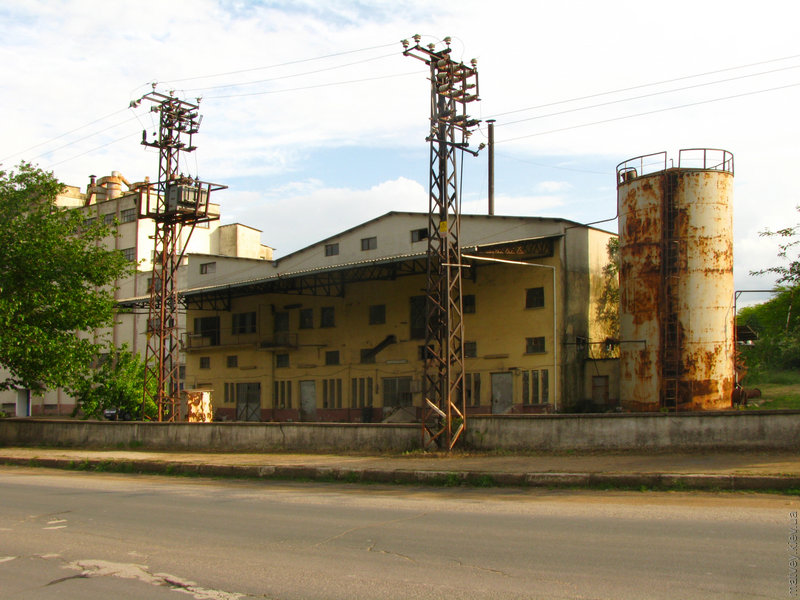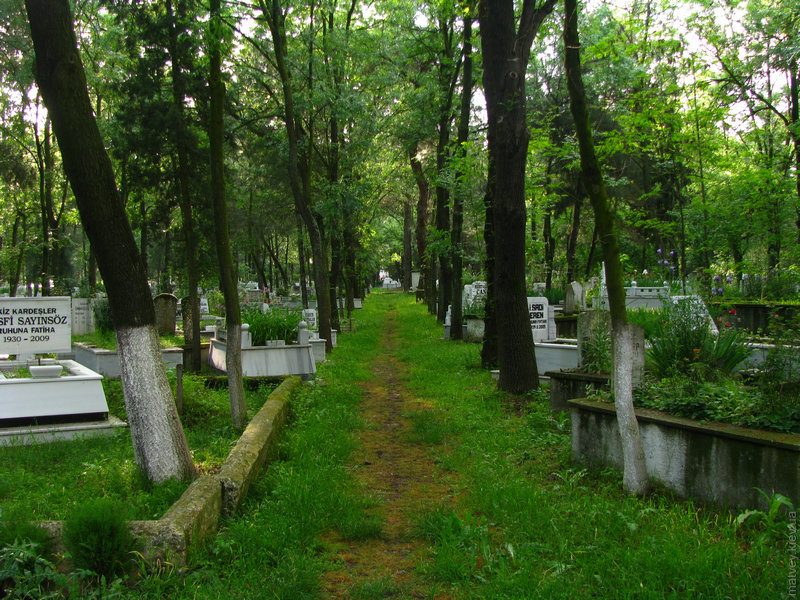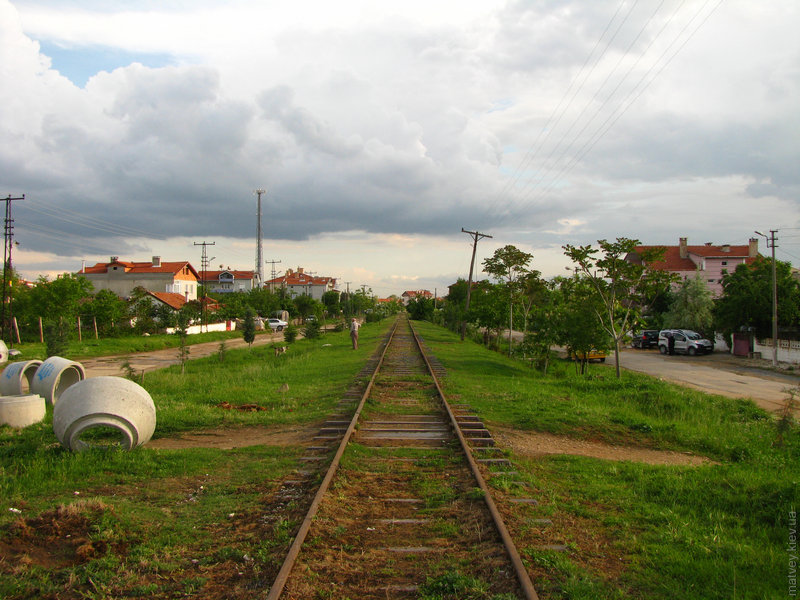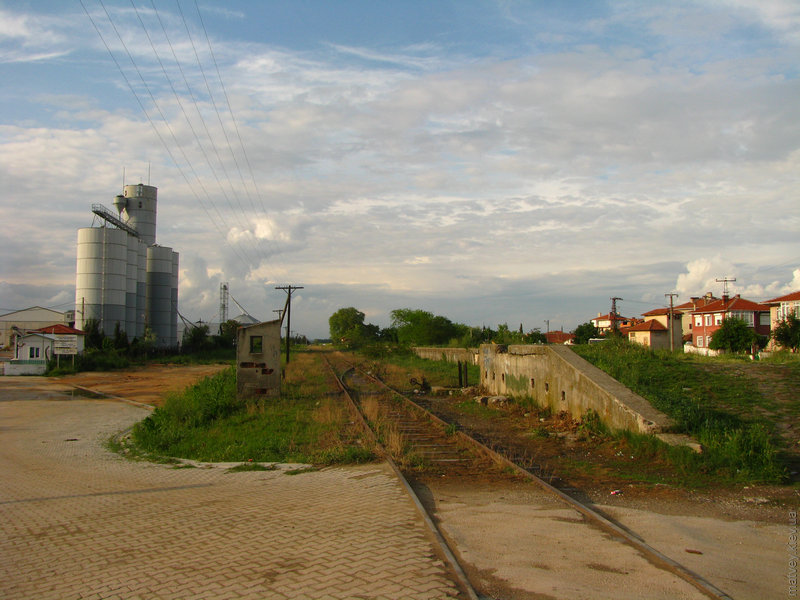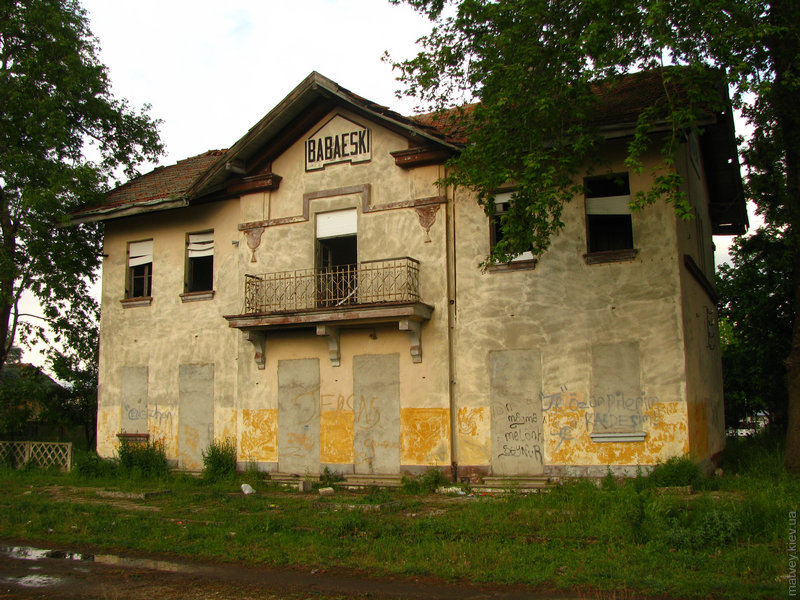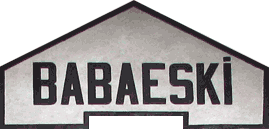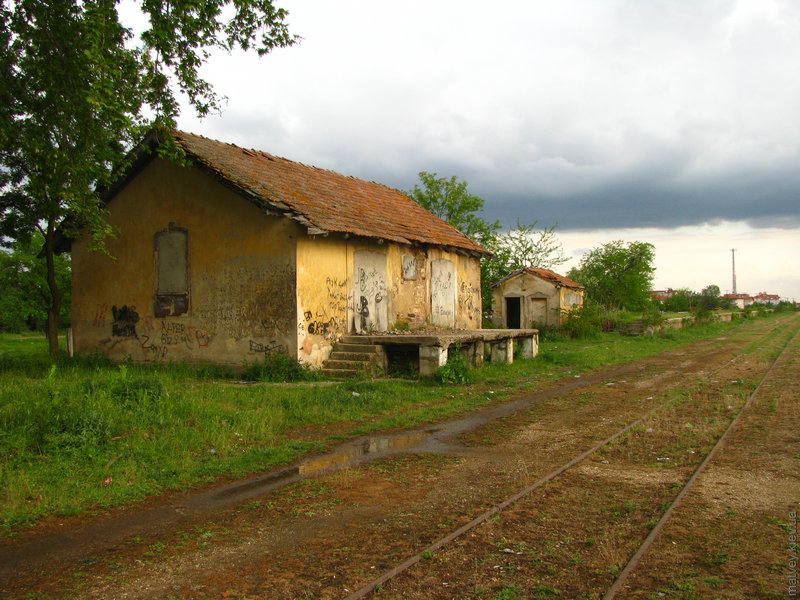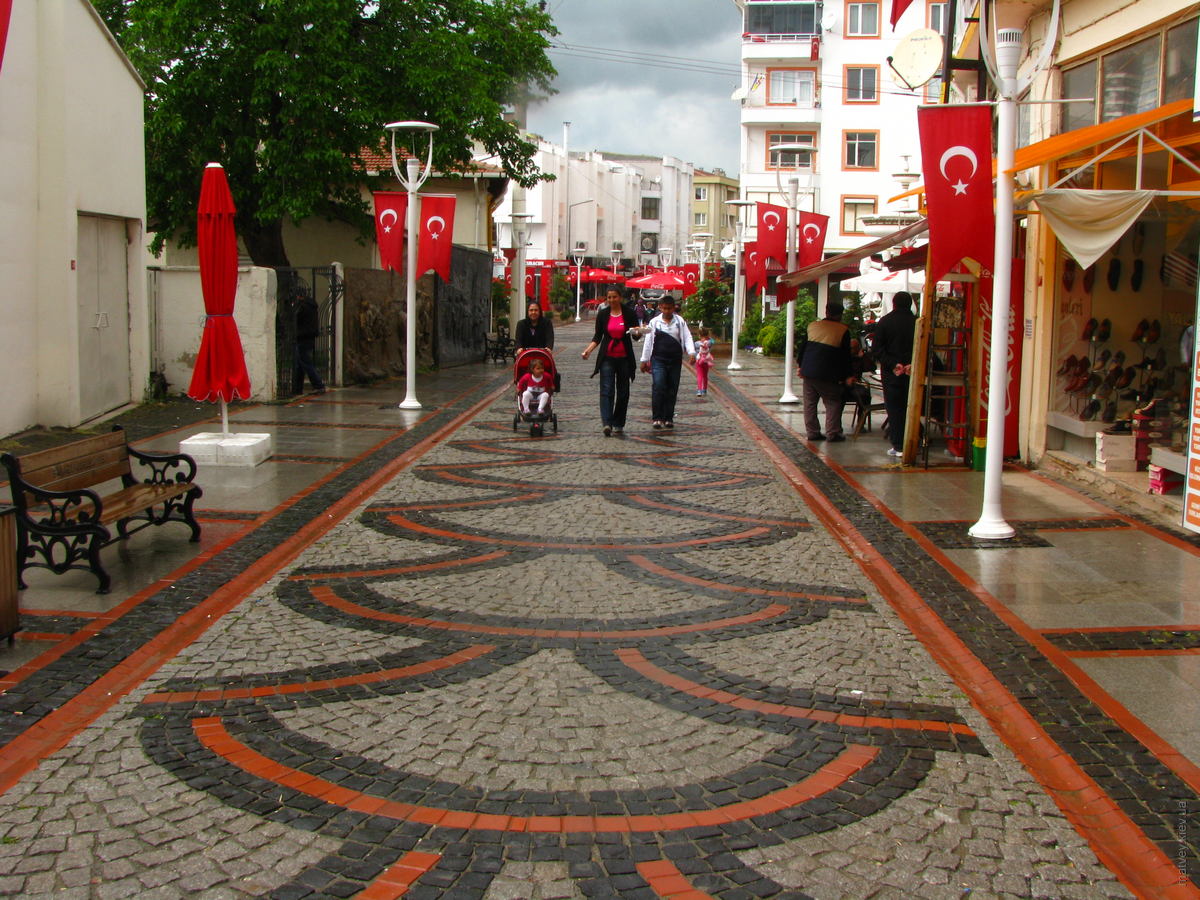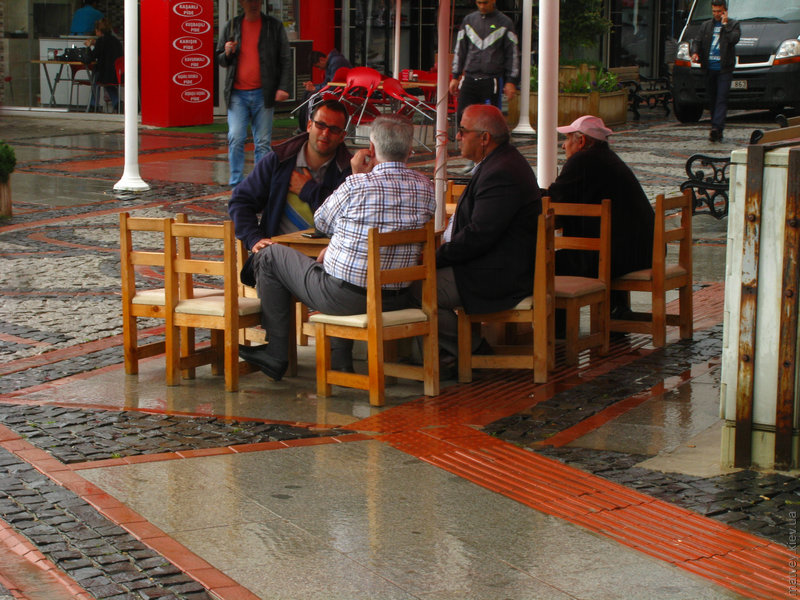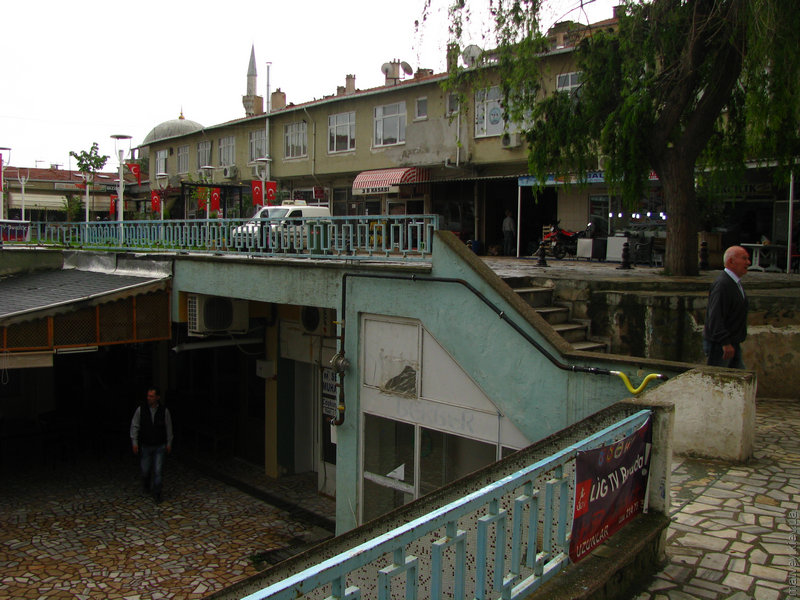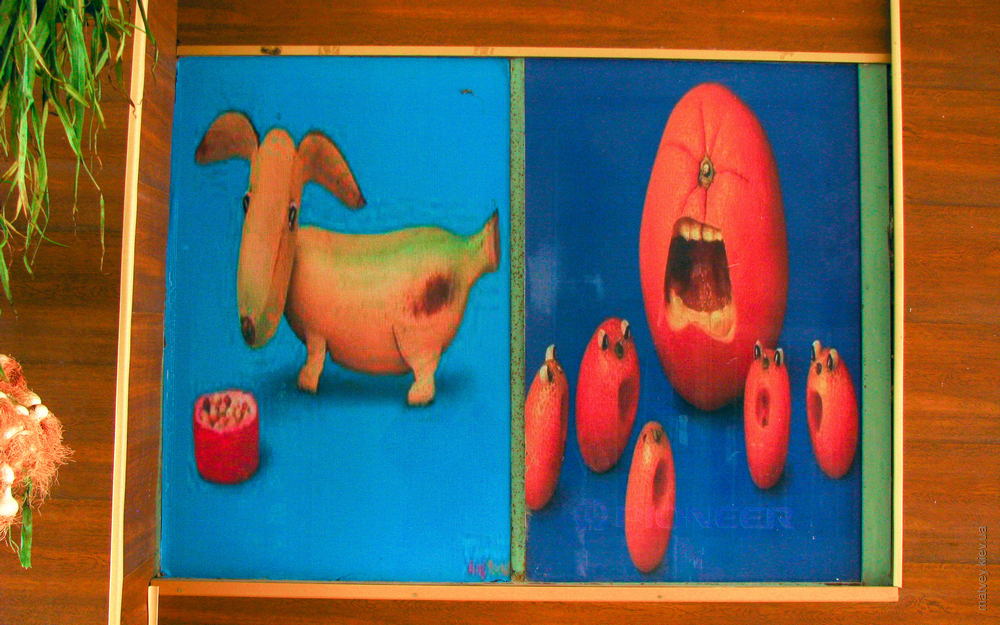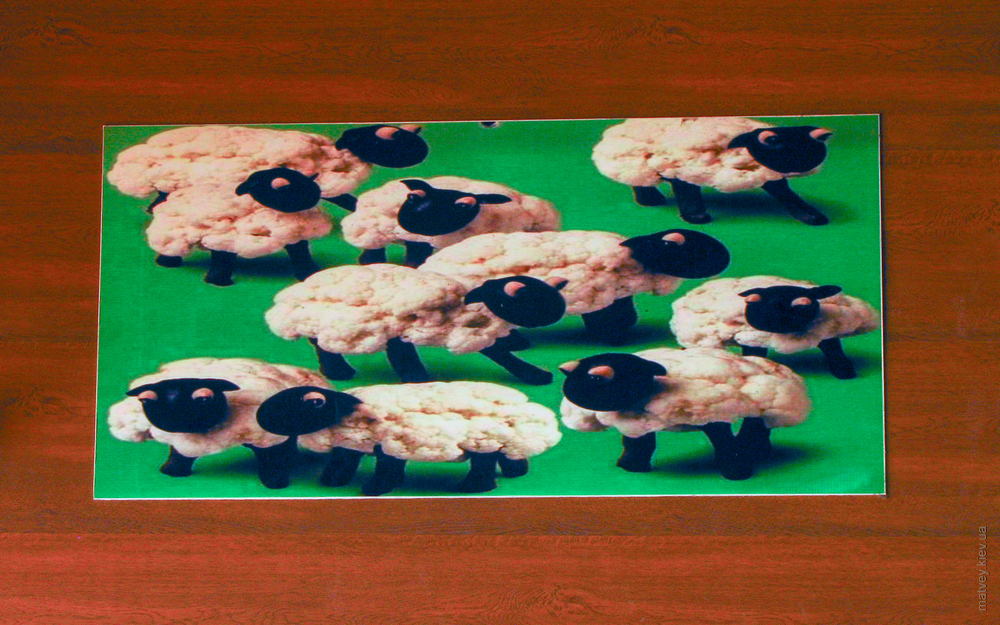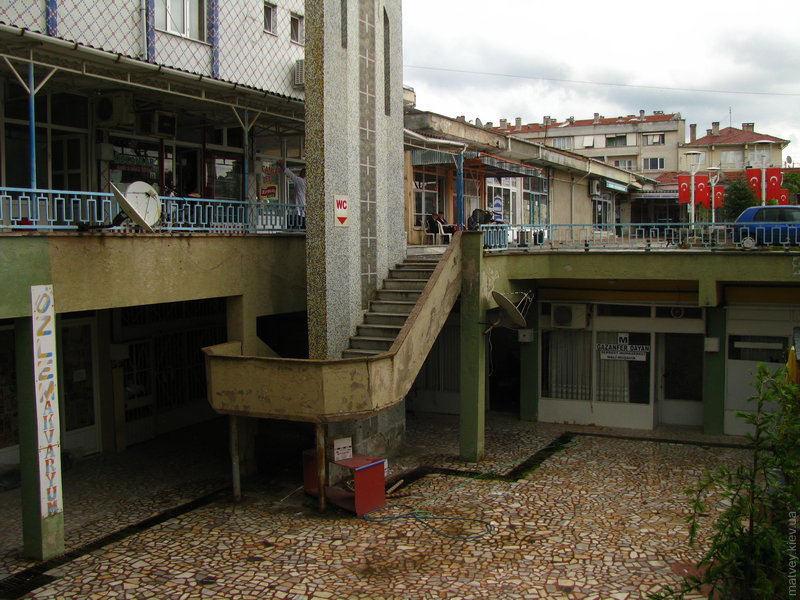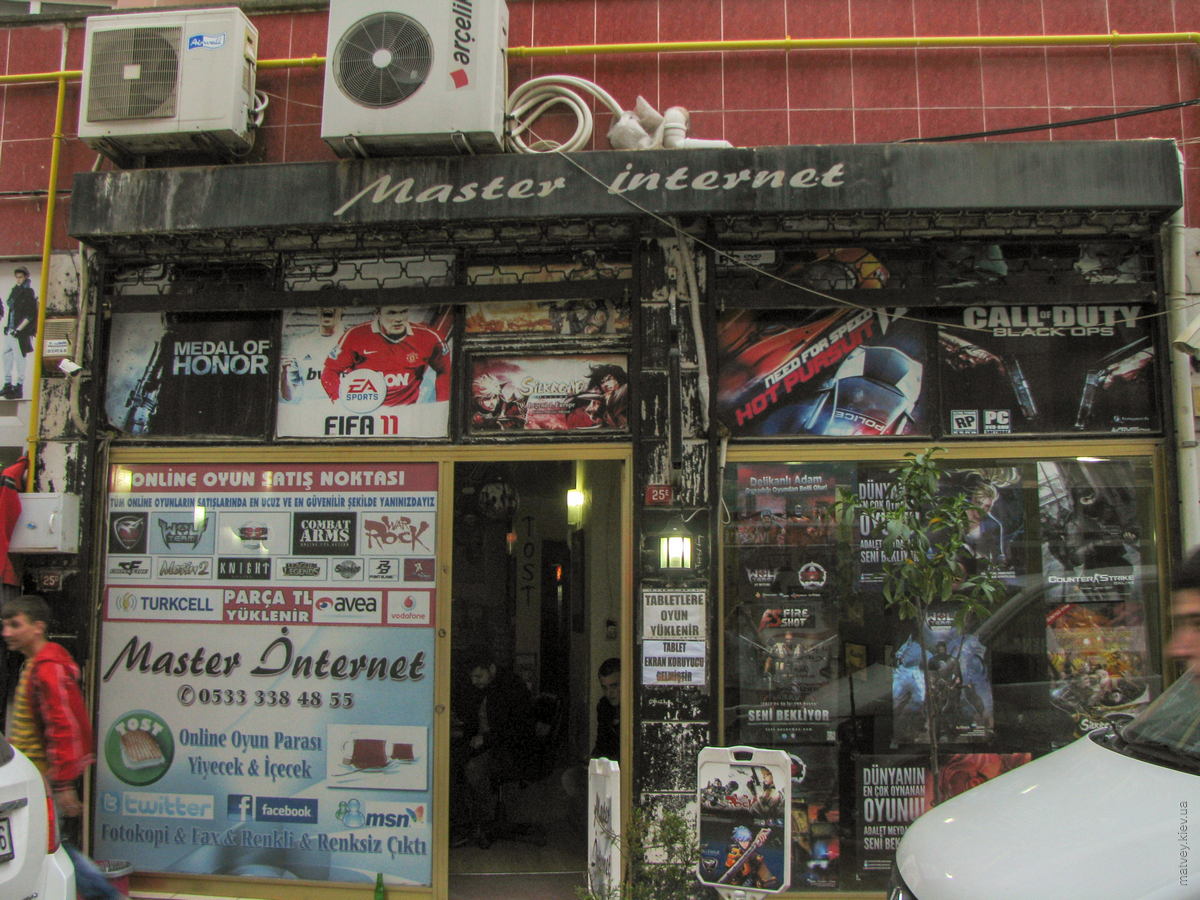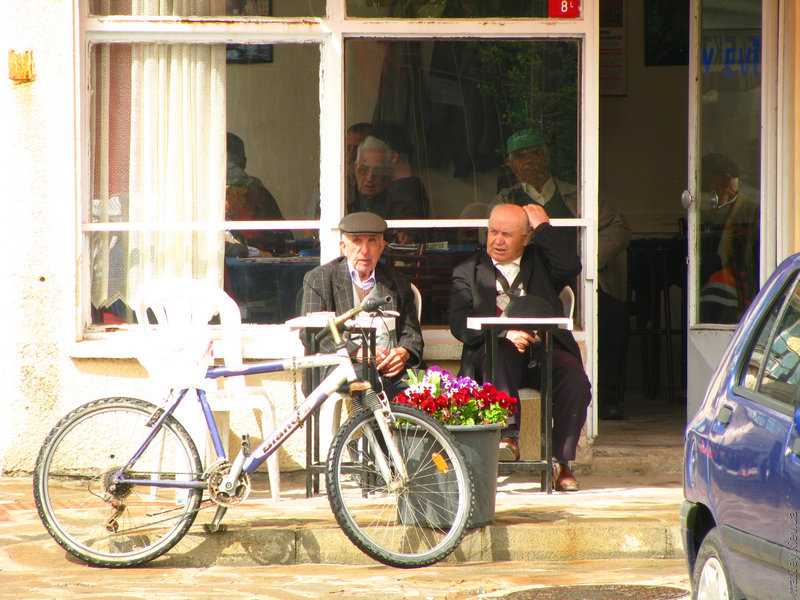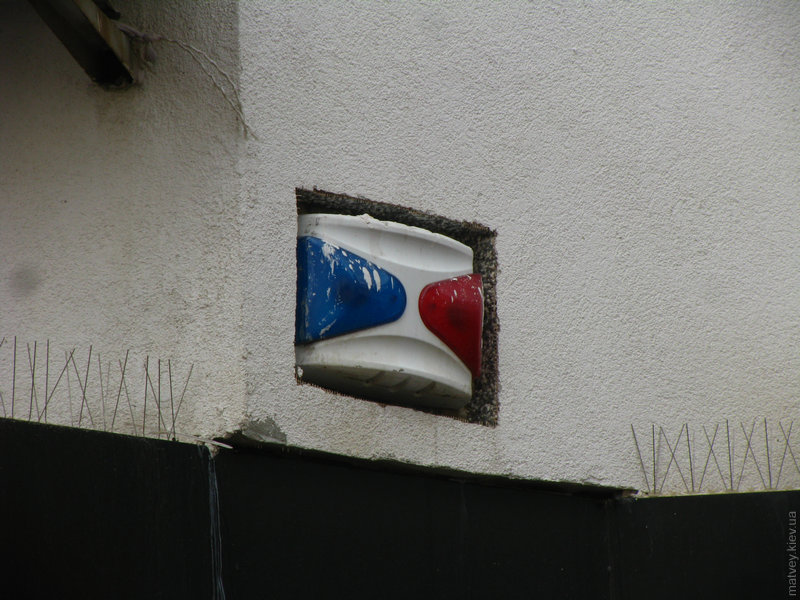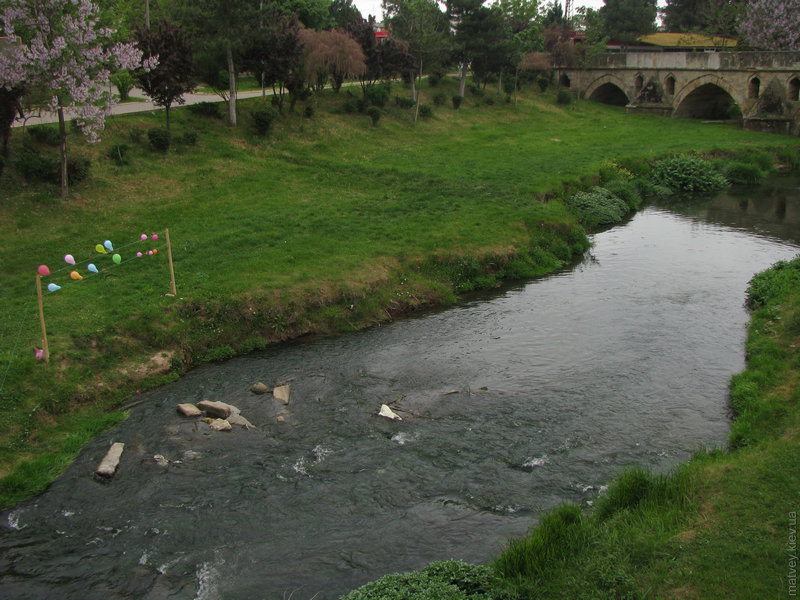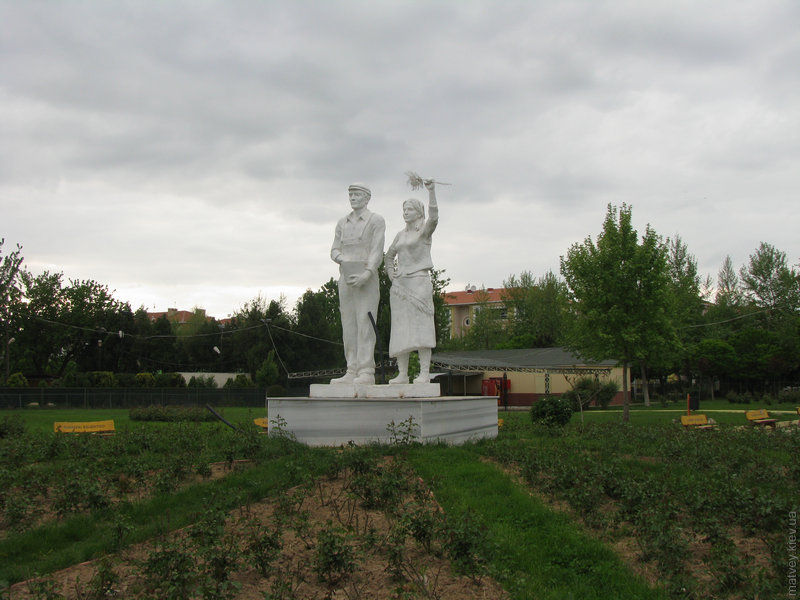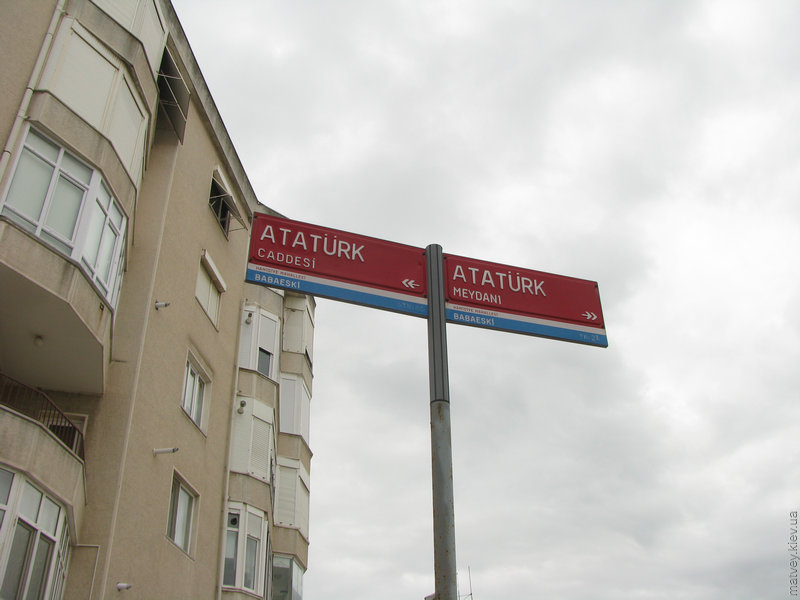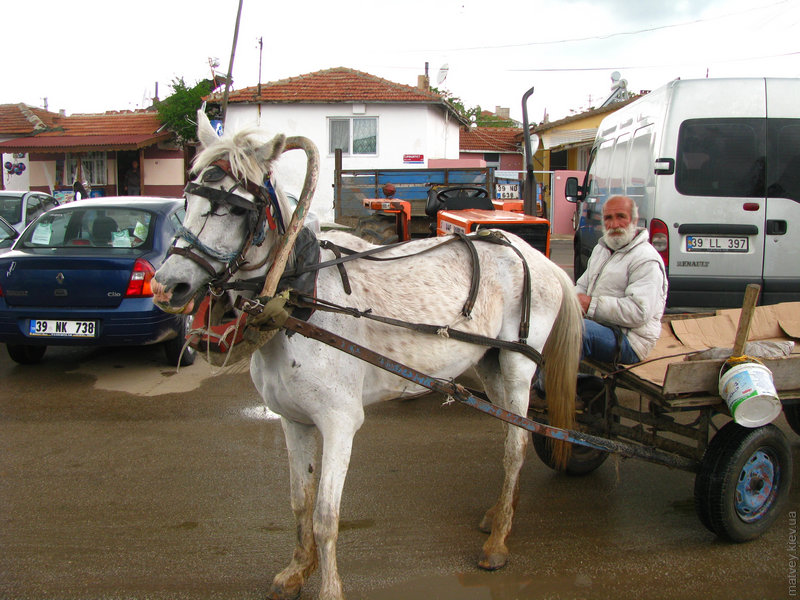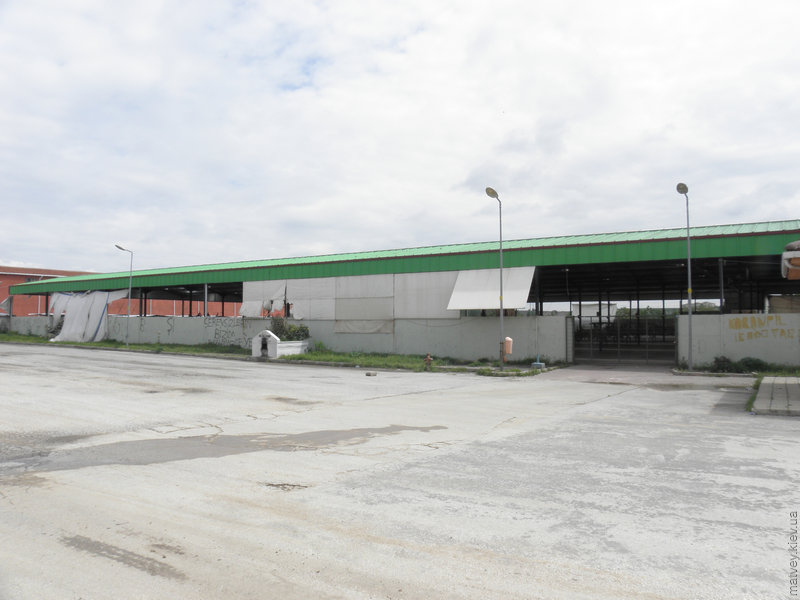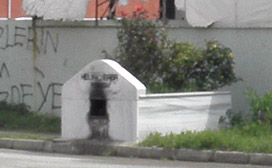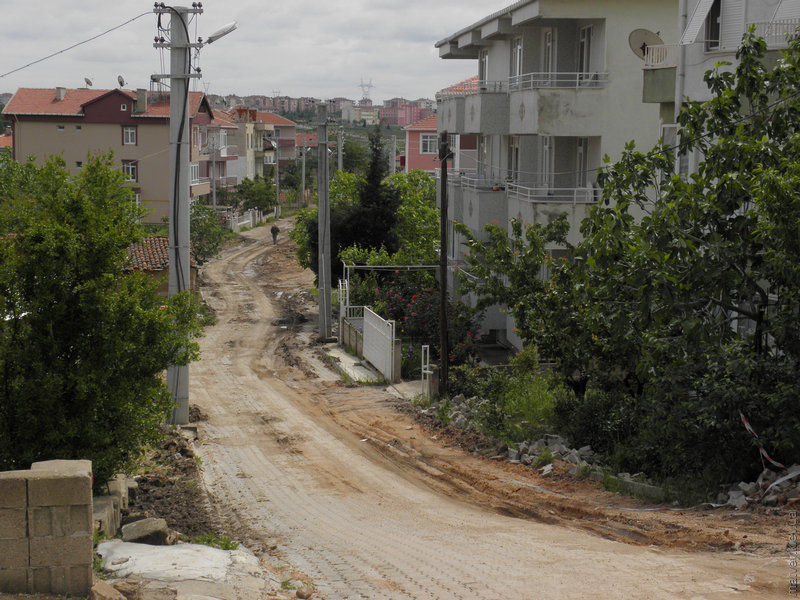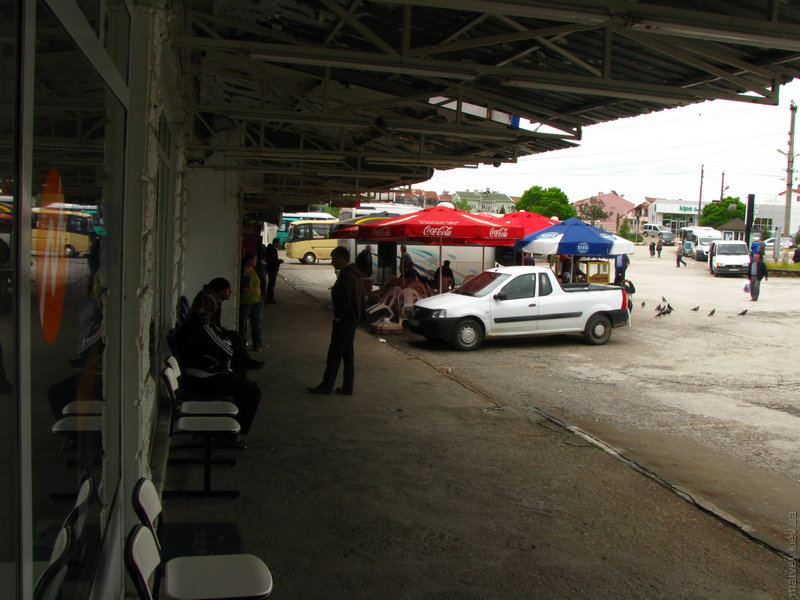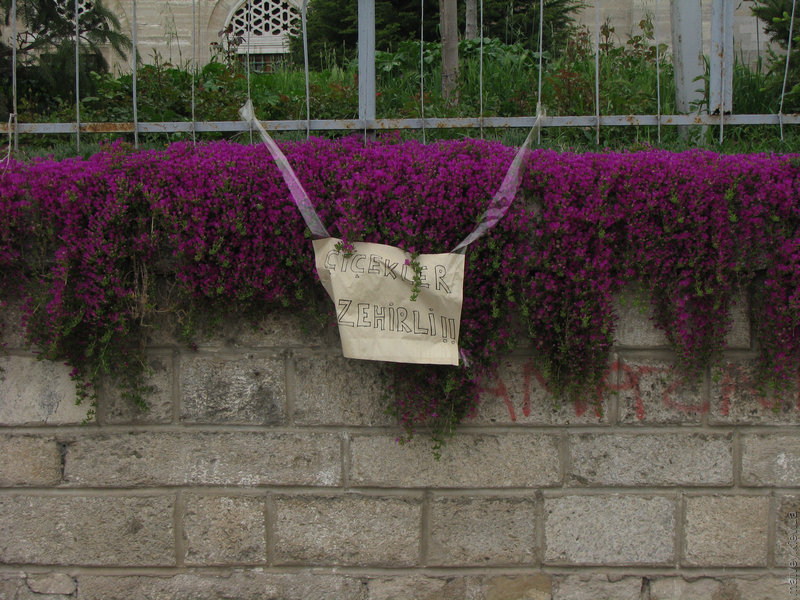It is a calm town in Turkey, to the west of Istanbul.
A fact not relevant to English: in some languages, Ukrainian included, the name of this town seems to be a plural of something, with people declining it as if it really is plural; same case is with the name Thessaloniki. The name «babaeski» means «father is old» in Turkish. Nothing plural.
There are two things that can be regarded as some sort of attractions in this town. These being: the rather old Cedit Ali Paşa mosque, and the old bridge over little river Şeytan. The mosque:
The bridge has been constructed in 1633. It has been actively used during my stay in Babaeski. I used it, too — five times at least.
Some people name this bridge after the popular ancient architect Mimar Sinan. He did not build this bridge, however. Lies do happen.
The soil on which this town stands, is red and rather sticky. The streets are paved with tiles or tarmac, but the pavement was covered with that soil. We had to calculate our steps in order to avoid bringing the dirt inside homes. As a bulletproof measure against that dirt, we've ended up just leaving the shoes near the very first door of the first floor.
As I walked around, I found the source of that red dirt: the pavement has been completely removed near the Höyüktepe hill due to road and sewer works. The dirt was then carried to main streets on truck wheels, and it was further dissipated to the living streets by other cars.
Höyüktepe means «a mound hill».
The hill is a somewhat vantage point to look at the roofs from. The color of the roofs is pretty similar to the soil's.
I guess the locals were looking forward to the finish of these works very eagerly. That dirt was such an inconvenience. Some places were completely devoid of sidewalks, making the dirt unavoidable to some.
There was a water tower near the hill, complete with a somewhat creepy concrete base.
Streets are given numbers, if no name is decided yet. There are many such streets in Turkey — the country is being developed faster than the speed of street naming process.
Naming apartment houses is easier than naming streets. Examples of building names are shown here, with «tutku» meaning «passion», and «özlem» meaning «longing» or «yearning».
There were many interesting vehicles in Babaeski. Here's a DIY truck:
And here's one that seemed to have lived through halving.
This tractor bearing the «Game over» words on it reminded me of the Carmageddon.
Turkish word for dump truck is «kamyon», and it is a loanword from French. Turkish dump lorries are american Dodges that are being assembled or made somewhere domestically. Similar-looking trucks can have «Fargo», «Desoto» and other words on the front grill.
And remnants of an ancient private house:
This one is something interesting. Such sturdy, green in most cases, furnace-resembling things are traditional monuments to unknown martyrs. I saw them in Babaeski and Kırklarelı, simply on the streets — in random, thoughtless locations. There are niches for candles or other fuel — black from the soot. It seems that the idea is to keep a little fire always burning. I wasn't able to find any more information on these things. Attaching the text engraved on one of these creepy — but fitting for their idea — monuments here.
Текст:
Vatan millet uğruna şehit olmus su yerde Ermis bir insansinki türben zaten bu yerde Cengaver Osman Baba gozükürsün her yerde Türben sanki bir cennet lafin olur her yerde
Yaptiran Ada
Mustafanin ?
Sadik Ersin?
4.1958
A couple of probably abandoned industrial buildings. Here's one:
The cemetery of Babaeski had lots of vegetation. Tombs were hue-less gray, which did not pair well with the greenery, as per my opinion.
There was an abandoned single-track railway passing through Babaeski. This branch of the railroad goes to the neighboring town of Kırklarelı.
I guess this grain elevator is one of the reasons for that railway branch's existence.
The train station was abandoned.
Another building of the train station.
The Adil Onat street is the town's promenade.
Witness the old fathers drinking tea on the new marking for the blind.
There is a well-hidden commercial square behind a not so obvious passage piercing a building. It exists among relatively high buildings, and is accessible via several little roads and passages. Small shops with little or no decorations are making up the perimeter of the square. A butcher's, a vegetable shop, a fishmonger's, the old and dark internet cafe are the examples of what was here.
Some nice illustrations on some shop's wall somewhere at that square.
A quarter of that square is a pit accessible via stairs. There were shops like shoe repair down below, also lacking graphic design which was needed by zero people here.
The story would not be complete without the internet shop.
Çay evi means a tea house. It seemed to me that the local old fathers preferred tea houses with zero decor or home improvement.
I have no ideas about the purpose of this blue and red blinker built into the wall of the town hall.
An offering in the local park: entertain yourself by shooting the air balloons (a pneumatic rifle was laying on a white plastic chair nearby). I saw no one using it.
The lands around the town are farmlands. This fact has a sculpture dedicated to it in the park:
Atatürk street was leading to the Atatürk square. A normal thing in Turkey.
Bazaar in Babaeski was working only on certain days. One day it was crowds, selling and shopping even on horse carts,
and the next day it was suddenly empty. Notice the furnace-like memorial — unusually, a non-green one.
One more red soil-covered street.
This is what the bus station looked like in Babaeski.
Çiçekler zehirli! means «the flowers are poisonous!». This warning was hanging near the bus station.
